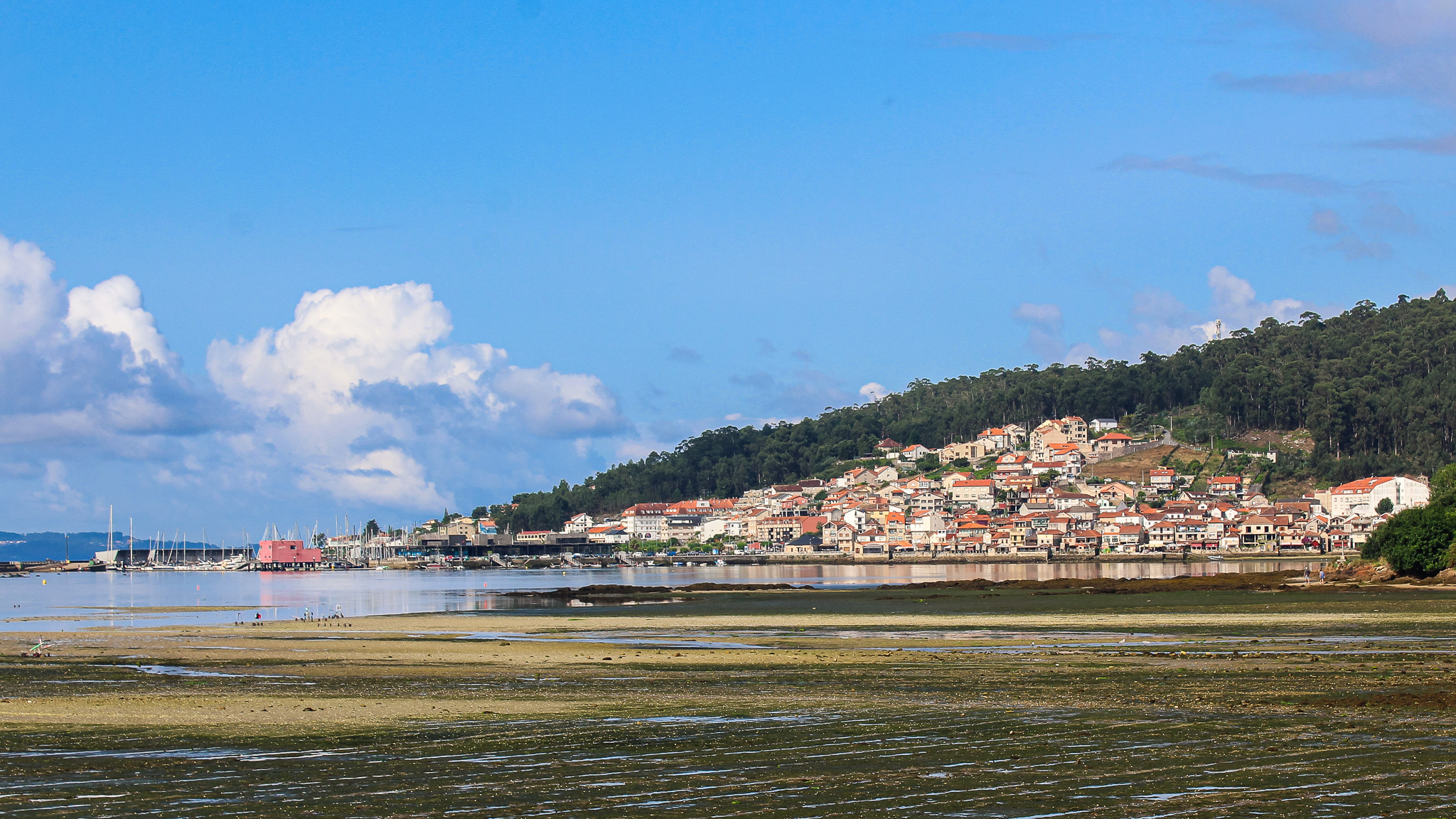Combarro is on the Ria de Pontevedra and is a classic, and charming, centuries’ old fishing village. Its tiny, narrow streets of two storey and balconied houses twist around and upon each other and rocky corners form the village’s limits, often marked with a cruceiros, a stone cross.
The lower floor of the houses would have been for storing fishing equipment and for cleaning and preparing the catch. The upper floor was the living space and rooves and balconies were utilised for dining and relaxing.

Today, pots of flowers and trailing bougainvillea vied for space with slumbering cats and the occasional vantage point of an elderly resident chattering across the top of our heads with a neighbour on the opposite side, in very thick sounding Galego.
Horreos are an intriguing sight and at first glance we mistook them to be tiny seaside chapels perched on capped legs like stone mushrooms. Some are lined up in rows alongside the beach, others are singularly in private gardens. One we spotted on the way out of the village in the car park of the local supermarket.

Horreos are credited to the Romans who conceived them as a way of protecting grain from mice and moisture. They are wooden granaries on stone stilts and usually decorated with a small stone cross. Nowadays they are used for general storage, often of fishing gear, or as improvised boat sheds.
At Combarro the horreos were also typically used for smoking fish and the village is known for having the greatest volume of them in the smallest space, 68 in total. We presumed that number included the supermarket car park one and found a magenta bougainvillea-clad one in the manicured garden of an apartment block along the main road.

We found it odd that Combarro didn’t feature in our guidebook. The port was lined with luxury tour coaches which were unloading packs of weary looking but determined elderly Spanish tourists. On our second lap of the village centre we found ourselves facing off with them in the narrow streets as they squeezed between the tiny shops selling strong liquor and tourist tatt.
Everybody was in each other’s way. We burst out gratefully onto the granite paved square and bagged a harbourside table for a large glass of Albarino each.
Opposite we noticed a riverside factory belching out a lot of smoke or steam. Being curious, we looked it up online and discovered a very controversial papermill, La Biofranca de Ence. According to several different sources, the company has allegedly been polluting the estuary coast.

We read horror stories about people getting burnt arms and sore eyes from the steam or, as they called it, acid rain. Others lost entire fruit crops, had car paint work ruined and in the worst cases suffered breathing difficulties. Some have been given compensation for the phosphor blue rain that stained their houses. Of course, the counter argument is employment and around 5,000 families say they depend on the factory.
A campaign to close the papermill was unsuccessful. It will now continue for another 60 years at least after a polished presentation at a tribunal in February earlier this year. Its lease has been renewed in recognition of “its value economically and for the future of eco production”. It was a sobering end to a lovely visit to this special corner.







